Neil Young’s Latest Proves a Natural Beauty
 Neil Young – Dreamin’ Man Live 1992
Neil Young – Dreamin’ Man Live 1992
December 8, 2009
Reprise Records
Victim of the Loudness War: No
Neil Young’s recent roll-out of his “Archive Series” has been a treasure trove of recordings from the man’s vault, featuring live and studio recordings that have either never seen the light of day at all or have never been released with such painstaking quality in mind. So far, fans have gotten the legendary performance from Massey Hall in 1971, a smoking set by Young and Crazy Horse from the Fillmore in 1970, some early recordings from 1968 and a mammoth boxed set spanning 1963-1972. But no release in the series thus far matches the quality and exuberance of the latest release in the project, the live acoustic, Dreamin’ Man Live 1992.
Recorded on tour in 1992, Dreamin’ Man captures Neil Young when he’s perhaps at his finest: alone. The album’s ten tracks (which mirror his 1992 studio release, Harvest Moon, in content but not running order) solely feature Young on each performance, using a guitar, harmonica or piano to accompany his stark-yet-alluring vocals. Gone are the lush, low-key colorations found on the album versions of the same songs, replaced by an intimate air that make already perfect songs that much more so. At the very least, it’s proof that Neil Young doesn’t need bells and whistles to make his music sound good – it can stand on its own just fine.
Dreamin’ Man opens with its title track, a beautiful tune that is given a new luster in this minimalist approach. The song gives way to “Such a Woman,” reduced to Young and his piano relating a simple message of love. Next up is “One of These Days,” a track that was amazing in its studio form and comes off quite well in this setting as Young recalls his past with gentle strums and heartfelt lyrics. It’s a poignant moment that stands out amongst the many others that surround it throughout the album’s hour.
Dreamin’ Man earns its accolades beginning with the next song, the absolutely magical “Harvest Moon.” The original version of this song is one that feels as though it was recorded beneath the very feature it is titled after, with a light acoustic guitar accompanied by brushed percussion, a stand-up bass and lilting backing vocals. Here as before, it is just Young and his guitar/harmonica combo and the listener is still treated to a song that sounds as though it was recorded sitting in front of a barn as opposed to a theater full of people. The subtle harmonics that once blended into the background are now brought forward, giving Young’s admittedly off-kilter vocal style that much more of a chance to shine through the mix.
“Harvest Moon” is quickly followed by “You and Me,” a move that reverses their order from the original studio album. Here, the songs belong together, as the stripped down version of “Harvest Moon” merges quite will with the already bare bones “You and Me,” another simple yet thoroughly moving song of love. They are a pair of songs that you never want to end, but luckily when they do Young has more than enough to stave off disappointment.
Dreamin’ Man is rounded out by “War of Man,” a haunting tale of the ongoing battle between man and the natural environment. On paper, that sounds as though it would be somewhat of a soapbox step-up for Young, but he manages to convey his point without getting too preachy. Instead, it’s a powerful closing to a truly beautiful collection of recordings from one of the most endeared periods in Young’s vast career. If the remainder of the “Archive Series” includes releases as undeniably strong as this, listeners will be in for one hell of a treat.
– Ian Rice
To purchase a copy of Dreamin’ Man Live 1992, please click here.
The Black Crowes Reawakened
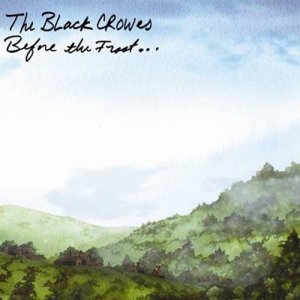 The Black Crowes – Before the Frost…Until the Freeze
The Black Crowes – Before the Frost…Until the Freeze
August 31, 2009
Silver Arrow Records
Victim of Loudness War? No
The Black Crowes have long been established as one of rock and roll’s pre-eminent live acts. Over the last 20 years, they have pushed boundaries on stages across the world, refusing to play their hits, choosing to instead melt faces with soaring guitar duels, earthy jams, outtakes from album sessions, B-sides to singles, new originals, re-worked originals, or a myriad assortment of well-chosen and expertly executed covers. The unfortunate thing is, like a majority of bands who are vitally potent on stage, that vitality does not always translate onto record.
In the case of the Black Crowes, the studio catalog has been spotty at best. Discounting The Lost Crowes (a rarities collection released in 2006 comprised from unreleased sessions recorded from 1993-1997), the Crowes’ recorded output the past 10 years has ranged from tentative but earnest (last year’s “comeback” Warpaint) to non-cohesive experimentation (2001’s Lions), to a downright awful parody of themselves (1999’s By Your Side). Even a live album (2002’s Live), which should have been the Crowes’ “ace in the hole,” failed to impress, mostly due to conservative song selection light on the jamming which defines their live experience, a sub-par line-up, and a very murky mix (very much a victim of the “Loudness War,” it is almost unlistenable). Continue reading
Everybody Knows This Is Somewhere
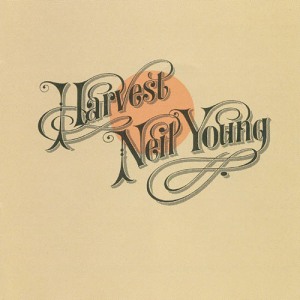 Neil Young – Neil Young; Everybody Knows This Is Nowhere; After the Goldrush; Harvest (Neil Young Archives Reissues)
Neil Young – Neil Young; Everybody Knows This Is Nowhere; After the Goldrush; Harvest (Neil Young Archives Reissues)
July 14, 2009
Reprise Records
Victim of Loudness War? No
When the term “remastered” is slapped onto the cover of any reissue, these days it usually means that the volume has been turned up and the audio has been compressed beyond recognition. Whereas a remastered album used to be painstakingly crafted by audio experts in order to reduce the tape hiss and other imperfections present on early CD releases, it is now simply an excuse to open the listeners wallets another time while simultaneously degenerating the sonic integrity of the recording. Countless albums have been ruined over the last decade all in the name of making songs standout more when played on the radio or preparing them for the ultimate quality-related death a song can suffer – being converted to the mp3 format. It’s a true shame for those that still appreciate sound, that understand that louder does not necessarily equal better.
Thankfully, Neil Young has got the back of every single audiophile out there, a fact that is no more clearly illustrated than by listening to the first four entries in his “Neil Young Archives: ORS” series: Neil Young, Everybody Knows This Is Nowhere, After the Goldrush and Harvest. The first four albums from his vast catalog of music, these reissues not only remain classics of songwriting and performance but show that with the right attention to detail and a methodical devotion to the intricate properties of sound, a remaster can still be done right. Each reissue is a aural masterpiece, painstakingly prepared for the digital age by a group of people (including Neil Young himself) dedicated to keeping the original sound intact. These four remasters are the first successful strike back against the homogenization of music that is the bulk of the digital download age and the first real win for the good guys in The Loudness War.
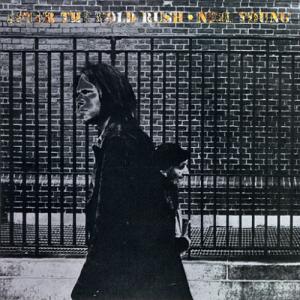 While each of the four albums included in this first round of reissues benefit greatly from the remastering process, 1972’s Harvest is clearly the biggest success. So many elements emerge from the mix when presented here (save for the still near-inaudible pedal steel on the fiery guitar classic “Alabama”) that it is almost a completely new listening experience. This is as close to the original vinyl sound that a CD issue of the album has ever seen and makes it the definitive digital version available. For those unable to afford the time and expense of a decent turntable setup, this is undoubtedly great news.
While each of the four albums included in this first round of reissues benefit greatly from the remastering process, 1972’s Harvest is clearly the biggest success. So many elements emerge from the mix when presented here (save for the still near-inaudible pedal steel on the fiery guitar classic “Alabama”) that it is almost a completely new listening experience. This is as close to the original vinyl sound that a CD issue of the album has ever seen and makes it the definitive digital version available. For those unable to afford the time and expense of a decent turntable setup, this is undoubtedly great news.
The real beauty of each of these reissues is that while they are cleaned up and revitalized, they have not been sterilized one iota. While some remastering engineers do everything possible to make an older album sound like it was recorded using present-day studio technology (and remove the heart and soul of the recording in the process), Neil Young and Co. understand the time and place these records were recorded in and use those factors as assets rather than setbacks. The tape hiss that is an inevitable part of every 1960’s – 1970’s analog recording is still present here, with the remastering work bringing previously-muted elements through it rather than over it. These albums still feel live and in-the-moment, but also have an added crispness and vitality that was lacking on their original CD releases.
Whether it’s the softer glory of Young’s 1968 self-titled debut, the epic guitar athems of his 1969 sophomore effort Everybody Knows This Is Nowhere or the back-to-back classics After the Gold Rush and Harvest, one thing remains abundantly clear: Neil Young is one of rock music’s greatest performers and most prolific songwriters. It’s nice to know that with these Neil Young Archives: ORS reissues, some of the best titles in his massive body of work are being preserved in a manner that is befitting of their stature. One can only hope that more of the same treatment is on the way for the rest of his catalog. And that Time Fades Away will finally find its way into the digital age.
– Ian Rice
To purchase a copy of Archives, Vol. 1, please click here.
-
Archives
- February 2012 (1)
- September 2010 (1)
- December 2009 (3)
- October 2009 (2)
- September 2009 (3)
- August 2009 (7)
- June 2009 (4)
- May 2009 (1)
- March 2009 (1)
- September 2008 (1)
- July 2006 (1)
- May 2006 (2)
-
Categories
-
RSS
Entries RSS
Comments RSS
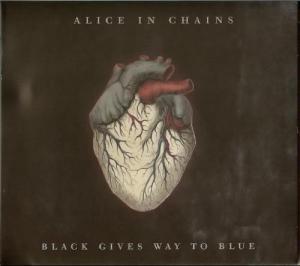 Alice In Chains – Black Gives Way to Blue
Alice In Chains – Black Gives Way to Blue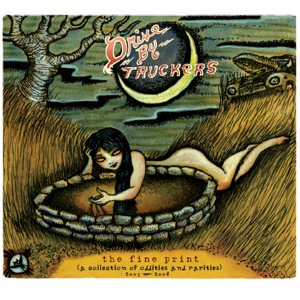 Drive-By Truckers – The Fine Print: A Collection of Oddities and Rarities
Drive-By Truckers – The Fine Print: A Collection of Oddities and Rarities